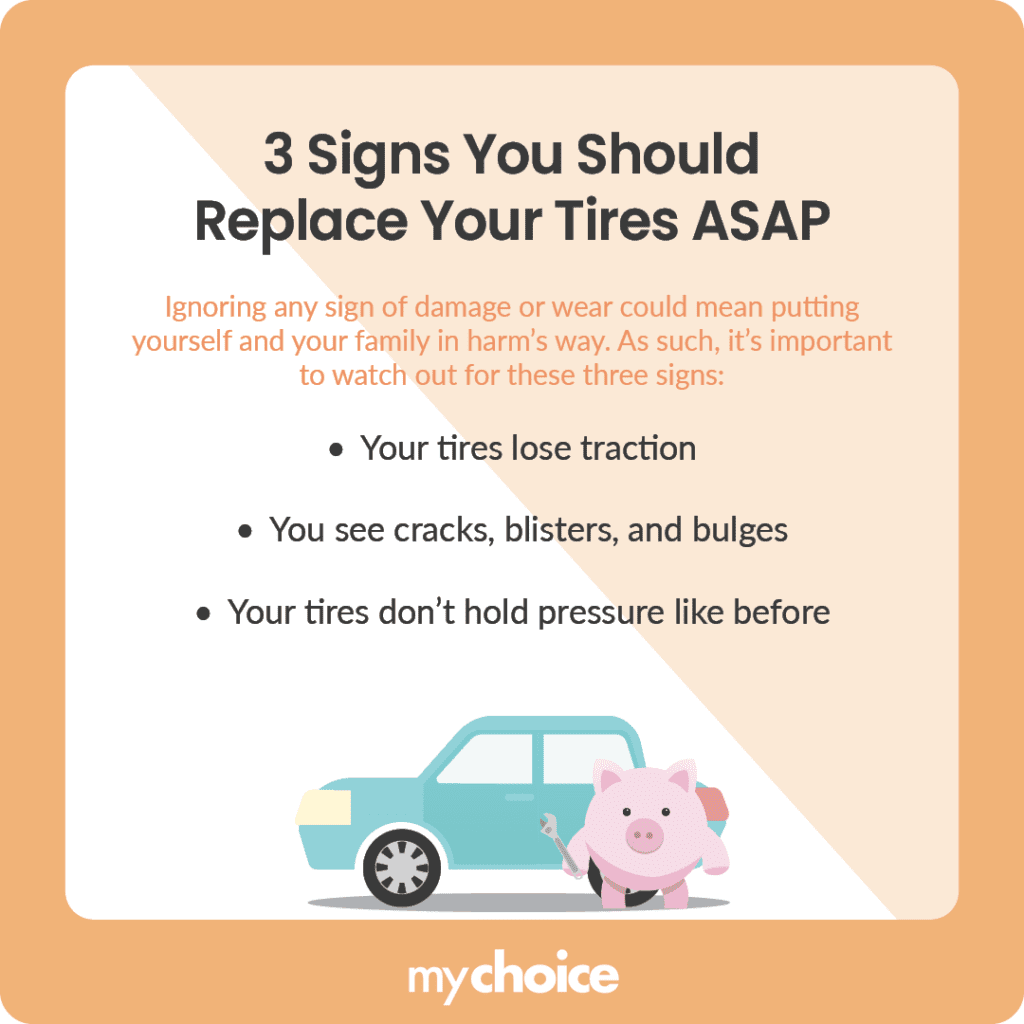While your tires are among the most important components of your car, there is no set timeline for when to change them. To figure out when you should get new tires, you have to be able to recognize the signs of wear and anticipate seasonal changes.
Keep reading to learn more about replacing your car tires — whether it be due to age, damage, or in preparation for winter driving.
3 Signs You Should Replace Your Tires ASAP
Tires provide the contact between your vehicle and the road. Ignoring any sign of damage or wear could mean putting yourself and your family in harm’s way. As such, it’s important to watch out for these three signs:

How Do I Know If I Need New Tires?
If you don’t find any of the above-mentioned signs and your tires seem fine, does that mean you can keep on using your tires without inspection?
Not quite.
When it comes to tire health and longevity, there are two essential factors to consider: your tires’ age and tread.
When Should I Replace my Tires in Canada?
Another reason to change your tires is the weather. When winter comes around and the temperature drops, regular tires lose their elasticity and have less traction than they normally do. Unlike regular tires, winter tires maintain their elasticity and grip at lower temperatures.
So, when should you switch to winter tires? If you observe seven consecutive days with below 7°C temperatures, then it’s time to make the switch. This is typically around late October to mid-November in Canada.
Follow the same logic when switching back to regular tires when temperatures start to rise again. When there have been seven consecutive days with above 7°C temperatures, you can go back to regular tires and have them on throughout spring, summer, and fall.
Make sure not to leave your winter tires on all year round. Their material is not made for high temperatures, so they’re at a higher risk of blowouts.
Key Advice From MyChoice
- Regularly inspect your tires and pay attention to signs of wear such as low tread, cracks, bulges, or loss of pressure. Regular inspections help catch potential issues early on.
- Know when to change tires seasonally. In Canada, drivers are encouraged to switch to winter tires when the temperature drops below 7°C and the roads become cold and slippery.
- Keeping yourself safe on the road doesn’t just come down to proper tire maintenance. Make sure you’re covered in case of any kind of road accident with a good car insurance policy. Use MyChoice to compare quotes and find the best deals today.








